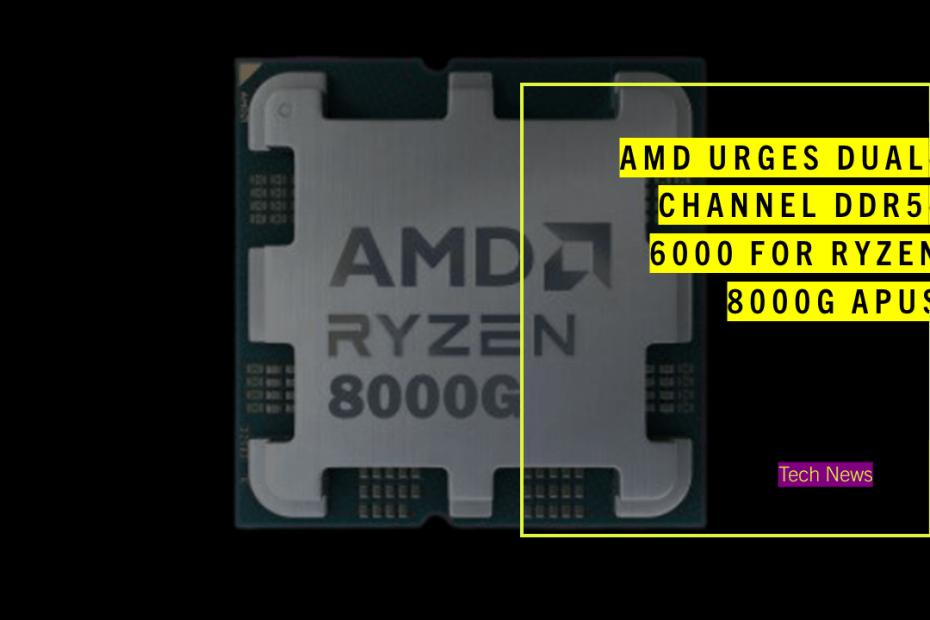At CES this week, AMD unveiled its latest Ryzen 8000 G-series Accelerated Processing Units (APUs) designed for the AM5 platform. PCWorld had the opportunity to delve into the details of these new chips and gain insights on maximizing their performance through an interview with AMD’s technical marketing manager, Donny Woligroski.
During the conversation, Woligroski shed light on the key features and capabilities of the Ryzen 8000G APUs, providing valuable information for enthusiasts and users eager to explore the potential of AMD’s latest offerings. The discussion aimed to uncover the unique attributes that set these APUs apart and to offer guidance on optimizing their performance.
The executive underscores a critical point about integrated GPUs, emphasizing their dependence on the memory subsystem within a computer. In simpler terms, the system’s RAM serves as the driving force for the integrated graphics. This integral connection between the integrated GPU and system RAM underscores the importance of selecting appropriate memory components.
The potential ramifications of compromising on this aspect are significant. For instance, opting for slower memory could adversely affect not only day-to-day tasks but also the performance of graphics-intensive applications, including gaming. The executive’s insight underscores the need for users to prioritize the quality and speed of their system RAM, recognizing its direct impact on overall system performance.
According to Woligroski, a crucial step to maximize the capabilities of an 8000 series chip is opting for dual-channel RAM. This configuration is deemed essential for achieving optimal performance, underlining the importance of memory setup in enhancing the overall capabilities of the processor.
In addition to emphasizing dual-channel RAM, Woligroski suggests a specific minimum specification for memory speed. He recommends a minimum of DDR5-6000, asserting that this option remains reasonably affordable while delivering the best frame rates. This advice not only guides users on the type of RAM to consider but also provides a specific speed threshold to ensure an effective balance between performance and cost.
Woligroski highlighted the advantages of using an Accelerated Processing Unit (APU) in a desktop environment as opposed to a laptop. Specifically, he pointed out that the desktop variant offers significantly more power, providing users with a greater resource pool for computing tasks and graphics processing. All the APUs discussed by Woligroski have a 65W Thermal Design Power (TDP), and he noted that power consumption scales proportionally with graphics capabilities in these components.
In contrast to laptops, the desktop platform offers substantial thermal headroom, allowing users to operate without the constraints imposed by elevated temperatures. Woligroski stressed that this increased thermal headroom is contingent on using a decent heatsink and ensuring effective case cooling. By opting for a desktop setup, users can harness the full potential of the APU without facing the thermal limitations that are often associated with laptops, contributing to a more stable and efficient computing experience.
At CES, AMD unveiled a lineup of four new 8000G chips, expanding their offerings for the AM5 platform. These include the Ryzen 7 8700G, Ryzen 5 8600G, Ryzen 5 8500G, and Ryzen 3 8300G. Notably, all these chips are part of the latest generation and come with varying specifications to cater to different user requirements.
Among the newly introduced chips, the Ryzen 7 8700G, Ryzen 5 8600G, and Ryzen 5 8500G will be directly available to consumers. This accessibility allows individual users to explore and integrate these processors into their custom-built systems, providing a versatile range of options for performance levels and budget considerations.
However, the Ryzen 3 8300G is positioned as a chip exclusively available to OEM system builders. This strategic limitation suggests a targeted market approach, potentially aligning with specific system integrators and manufacturers. While this particular chip may not be directly accessible to individual consumers, it signifies AMD’s engagement with OEMs and their interest in providing tailored solutions for pre-built systems. This diversified approach to availability ensures that both end-users and system builders have suitable options within the 8000G series based on their preferences and requirements.
The pricing for the newly introduced 8000G chips by AMD varies across different models, catering to diverse user budgets and performance expectations. The entry-level option, the Ryzen 5 8500G, starts at a competitive $180, making it an accessible choice for users seeking a balance between performance and affordability.
Moving up the performance spectrum, the Ryzen 5 8600G is priced at $230. This mid-range option provides enhanced capabilities for users with more demanding computing needs, offering a viable choice for those looking to strike a balance between cost and performance.
At the top end of the spectrum, the Ryzen 7 8700G commands a price of $330. Positioned as the flagship model in the 8000G series, this chip is tailored for users who prioritize top-tier performance and are willing to invest in a higher-end option.
All three models, the Ryzen 5 8500G, Ryzen 5 8600G, and Ryzen 7 8700G, are scheduled for launch on January 31. This simultaneous release date ensures that users can promptly access and integrate the processors into their systems, providing a clear timeline for those eager to experience the capabilities of the latest additions to AMD’s 8000G series.
Maybe you liked other interesting articles?

